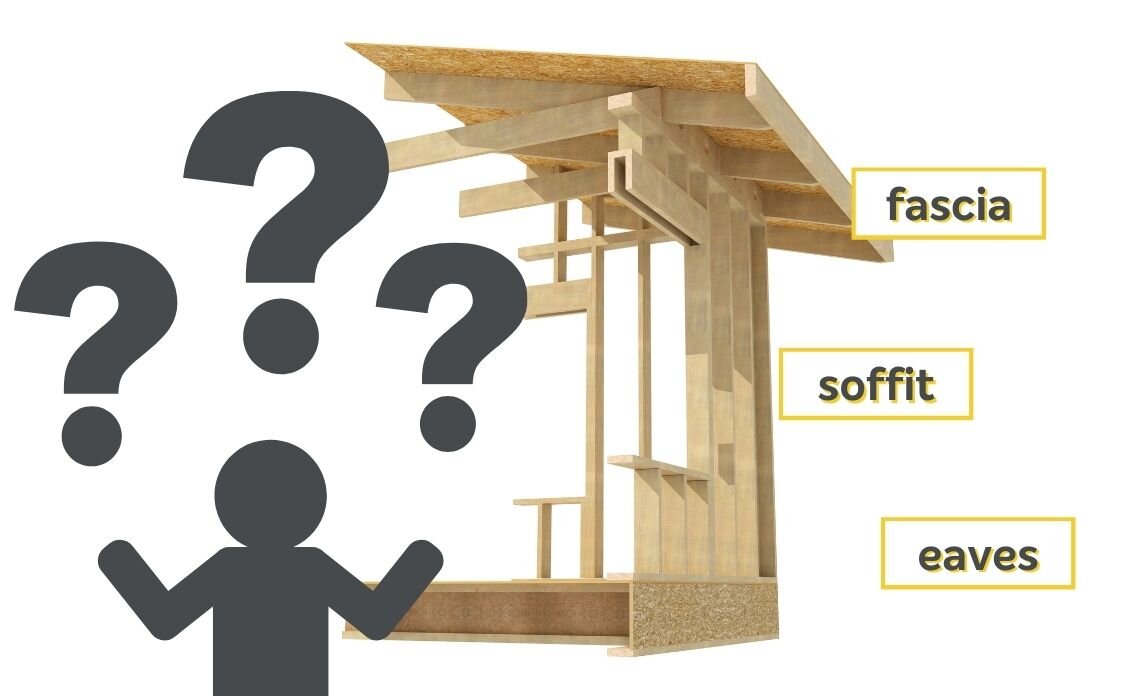What is a soffit and where is it found? Does it have asbestos?
When the time comes to begin your home renovations, it’s only natural to feel a little lost. You start learning so many new terms and find yourself nodding your head at your builder before quickly Googling what they are talking about.
Before you end up in a rabbit hole of Google searches like “soffit NZ” and “what is a soffit”, why not inform yourself in one easy place? We’ve got some helpful information about soffits, fascias, eaves, and even a little bit of information surrounding these home features with asbestos.
What is a Soffit?
A soffit in NZ is a building material that can add character to a home while also protecting it. Suppose you have been wondering, ‘what is the purpose of a soffit?’. In that case, the easiest way to describe it is an underside of building materials that protects your rafters and home from the elements. It does this by keeping away moisture that could cause mold to form and preserve your building materials as a result.
Even though a house soffit is a functional building material that every home must have, it can also be an aesthetic one. You can purchase them in a range of beautiful styles and colours, including those with ventilation holes if you have an attic to provide fresh air for.
Even though we often associate soffits with the exteriors of our homes, they also feature on the interior, as well. They can form the underside of a cornice or a flight of stairs or the curvature (coving) of plasterwork. You may even notice a soffit creating the underside of ceiling tiles in an office space that has been suspended to a grid system.
Soffits and Fascias
While undertaking renovations, a soffit is not the only new building material you will learn about. You may also hear them mentioned in conjunction with fascias. So, how do these two building materials work together? And what is under the soffit?
When you look at the exterior of your home, you will notice the exterior soffit located beneath the rafter tails. The fascia is what you see at the end of the rafters, which is exposed to the outside.
Both soffits and fascias have traditionally featured aluminium and wood, but you can now opt for high-quality synthetic and composite materials such as vinyl and UPVC. The benefits of these new materials are that they are easy to clean, durable, and can also be made to look like other materials, such as wood.
What About Asbestos in Soffits?
Even though we now use a lot of wood, aluminium, and composite materials for soffits in NZ, many of them used to be made of fibre cement, which often contained asbestos. Without hiring an asbestos removal company for testing, you may not know whether your soffits feature this hazardous material or not.
Fibre cement was used in soffits in NZ for a variety of reasons. It was mass-produced in factories because it was affordable, lightweight, and strong. The strength came from asbestos fibres having a high-tensile strength. We just weren’t to know early on that such benefits come at the cost of our health.
Asbestos soffits were also easy to cut, required minimal preparation, and could also offer some protection from fires. While they commonly feature on the exterior of people’s homes, it’s not uncommon to find interior ceiling soffits with asbestos, too.
These tend to feature in sheds, porches, carports, and garages. If you suspect that any soffit in your home contains asbestos, consult an asbestos removal company for advice.
Soffits and Eaves
Now that you’re familiar with the relationship between soffits and fascias, you may like to learn more about soffits and eaves. As you know, the soffit is the underside component. However, the eave is part of the roof that overhangs the walls.
Even though soffits and eaves are two different things, they have one thing in common: their job is to protect your rafters and other building materials from the elements.
Asbestos in Eaves
When you think about asbestos in your roof, you often think about Super Six roofing; an asbestos-cement sheet roofing type popular for decades. While this can be a concern for homeowners, it’s also important to note that the eaves may also contain asbestos.
In many New Zealand homes, the roof eaves that met the walls were made of non-friable asbestos sheets. Homes built in and before 1980 were more likely to have such building materials. While they are safe when left alone and in good condition, they can pose a danger if they are not.
If you notice any discolouration, splitting, or cracking in your eaves, or you have accidentally drilled into them after not realising what they could be, it might be time to contact an asbestos removal expert.
Asbestos Where You Least Expect It
Homeowners are becoming more and more familiar with where asbestos could be hiding in their homes, such as roofing and flooring. However, if you are not familiar with what soffits, fascias, and eaves are, you may not realise that they, too, can contain this hazardous substance.
To be fully informed before you make any dramatic changes to your home, contact an asbestos removal expert. They can perform thorough asbestos tests that paint a complete picture of what your renovation project could look like.


